Pamukkale (from the Turkish Cotton Fortress) is known for its hot springs and beautiful unusual landscapes. Pamukkale is guarded by the Turkish authorities. Waters in sources are rejuvenating and healing. He treats everything in a row, and outside, and inside, so the people here are shaft here. This is generally one of the most beloved and popular excursions in Turkey.
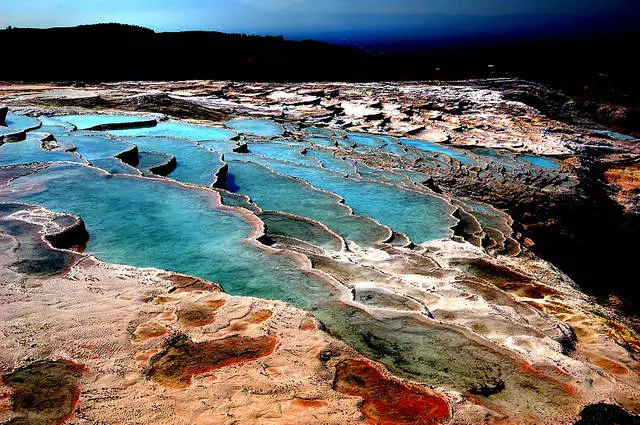
One of therapeutic complexes - Khakhat. ("Red Water"). The temperature of the water is 80 ° C, but do not worry, then it cools up to a temperature of 60 ° C. Hot, but you can get a leg, for example. These water contain different substances, and, in particular, a lot of iron, so water and "red" (well, in general, from yellow to brown). People here can take over in natural formations in the form of baths, in which water accumulates - "by ankle". With this complex there are two more hot keys.
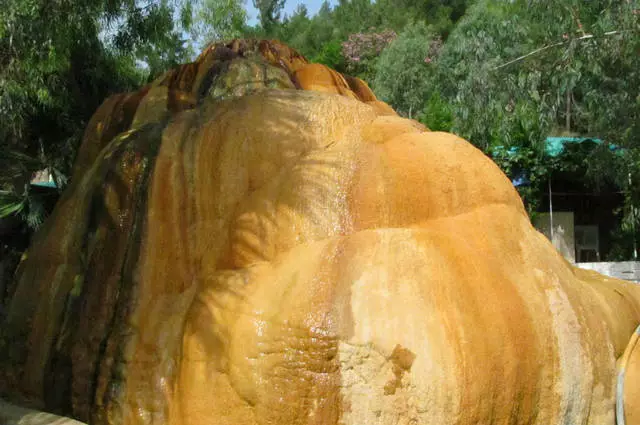
One of them flows from a hill, which under the action of water became "striped", and the water is also colored. And hot - approximately + 40 ° C. The second source with a high content of sulfur is shown to people with skin diseases. This source is also hot, somewhere + 30 ° C. This complex is popular both among tourists and the Turks themselves. These waters can, like, like, even drink, at least, people here are gaining a water bottle only on the road.
Next, we move to the thermal center.
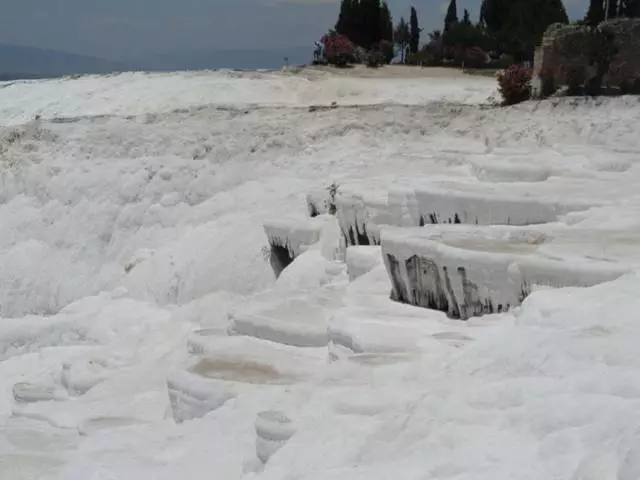
Mineral springs with waters whose temperature ranges from + 30 ° C to + 45 ° C. All this beauty is in UNESCO lists. The complex is located on the edge of the ancient volcanic plateau Kuciuk-Chekelevis, above the valley. Thread flows across the slopes, as well as they contain a lot of calcium and salts, then the slopes were formed solid growths of dazzling and white.
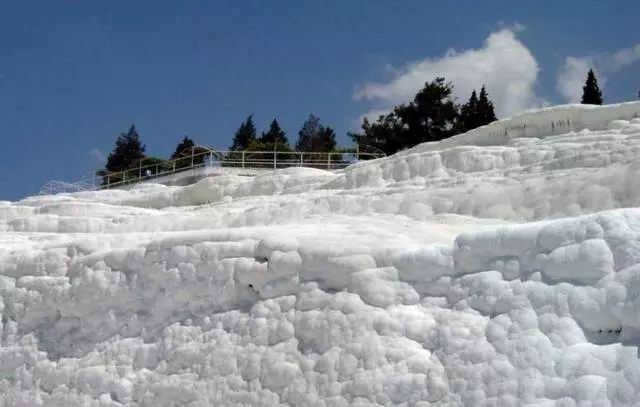
Special sections are allocated for walking on them, and in general it is impossible to run on them. At the foot of the plateau, people bathe in Cleopatra baths. It is said that these baths are eliminated even from paralysis, which is, to talk about some rheumatism or hypertension. Also here you can splash in mud baths to get to get and rejected. By the way, the fact that these all waters and dirt is so useful, it was known for a very long time ago, 4 thousand years ago. There is a legend that Cleopatra loved to come here to splash in the waters and support his beauty. And from the second century this place was generally a place where rich people from all over Asia moved.

Ruins of an ancient city Jeanapolis ("The Sacred City") are somewhere in a kilometer and a half from the center of Pamukkale.
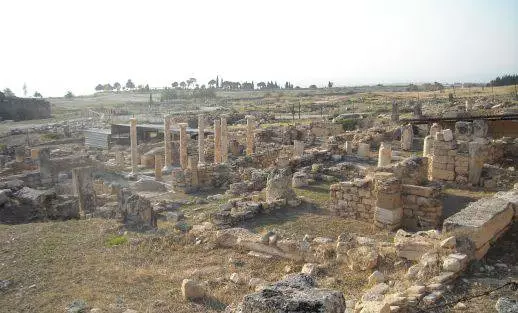
The city stands on a hill of 350 meters high. The first buildings here began to emerge 2000 years before our era. In the area of the 1st century BC, Jerapolis became part of the Roman Empire, and a terrible earthquake destroyed him a little later. In the middle of the 1st century, he quickly rebuilt and made the resort. Earthquakes here happened, by the way, more than once, and in 1534 the city completely collapsed. Almost before the beginning of the last century, Nobody recalled about Jerapolis, and relatively recently began to dig, and tourists poured there. One of the most famous parts of the city is an antique theater, the third largest after theaters of Ephesus and Aspendos.

The theater was built in the 2nd century, from solid stones. The height of the structure is about a hundred meters. It turned out fifty rows, the passages are located on both sides. Among the places for ordinary spectators (10,000 places) there was an imperial bed. Every year, the International Music Festival is held in Pamukkale, just in this ancient theater of the hierackolis. By the way, there are no ten thousand places, but somewhere around seven.
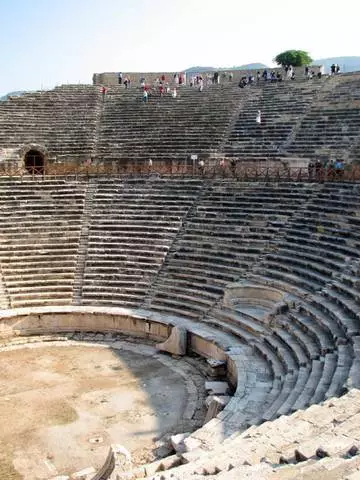
Also in the hierarpolis there is a temple of Apollo - it was built in the 3rd century to our era. Today, only a staircase and a playground remained from him, surrounded by the walls of the walls. This temple, it seems, suffered during an earthquake, and it, it seems, as happened at the time of the crucifixion of the Holy Apostle Philip.
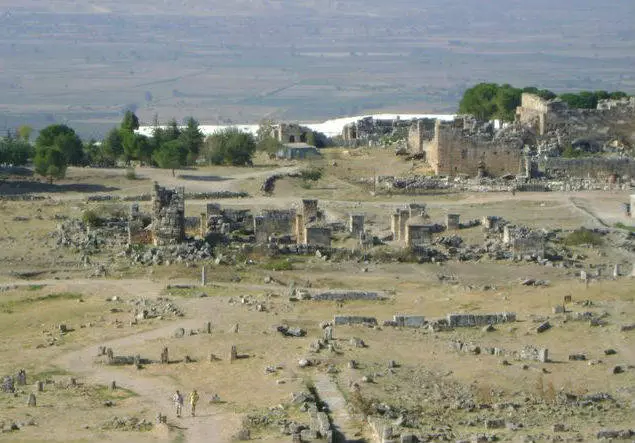
There is still an interesting place of Pluto.
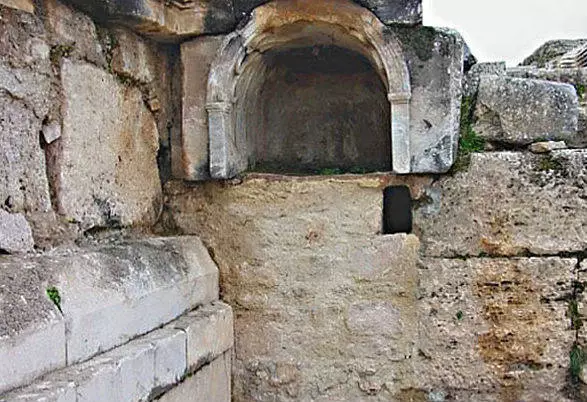
This is something like a crack in the ground, fenced by a stone case. When poisonous evaporations come out of this crack, they kill birds and insects, so that the inhabitants of the city were confident that it was an angry Pluto, the God of the Underground World. Previously, this grotto could go, but when German tourists suffocated there, the grotto was closed with a lattice.
There is an Arch of Domitsian in the hierarpolis - once it was the entrance to the ancient city.

They were built in the 1st century. After them began the spacious central street at 14 meters wide, which was held through the entire hieraripolis. Earlier, the gate was two-storey, now only one floor has been preserved and two towers connected by arch. It is known that once in front of the city gate was the bath. And, it seems like, you could only go to the city.
There is a small Byzantine Church with a beautiful marble altar and something like icons on a marble plate. Previously, there was a plate with an image of Apollo on the entrance to the church.
Look at the ruins of the church of St. Philip.
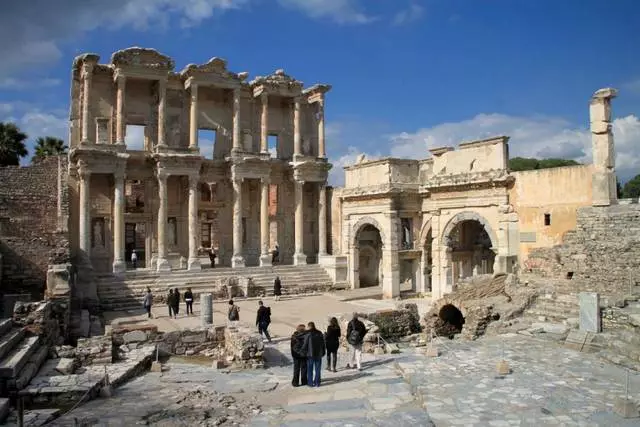
He was built in the 4th century at the site of the death of the apostle, and, according to legends, his tomb should be in the center of the temple, but they were not found, and traces too. In diameter, this octagonal temple is about 20 meters. The temple was destroyed by an earthquake, but still on it can be climbed by the stairs outside. By the way, every November in Pamukkale is celebrated by the feast of St. Philip. Sometime in this temple was committed by mass pilgrimage.
Also in the hieraripolis you can see in the necropolis on burial, sarcophagi, Lycian graves, scleps, etc.
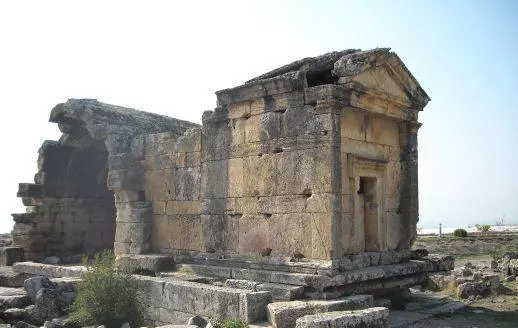
In length, necropolis about 2 km. The funeral facilities are impressive with their power: plates, arches, columns. The oldest burials usually represent the round mounds - they relate to the second century BC.
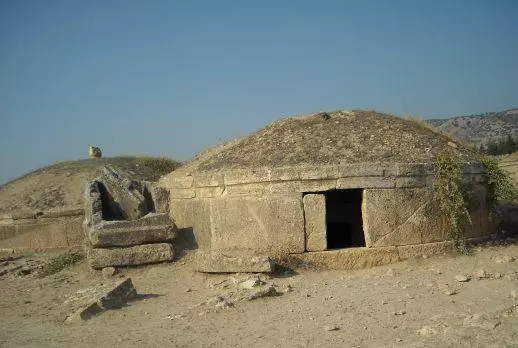
Take a look at the museum, which is located in one of the largest buildings of the Golden Ban of the second century BC. Only walls and spans remain from the bathhouse.
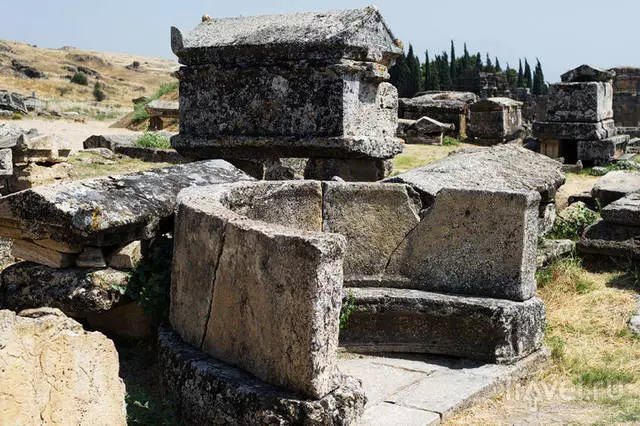
Previously, there were rooms with pools and gymnastics halls. True, where this bath begins and ends, the archaeologists still set. The museum is here from the 84th of the last century. It contains coins, jewels, sculptures and bas-reliefs. Some items were found not only in the hierarpolis, but also other cities of Malaya Asia. Exhibits are dating periods from the bronze century to the era of the Ottoman Empire.
